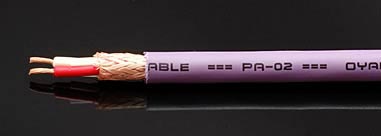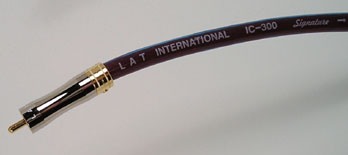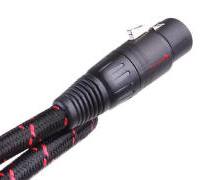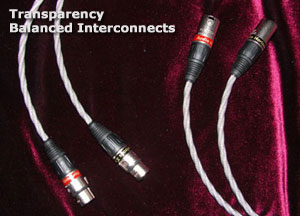I was just sitting there listening to music. I was enjoying the apparent sound stage created between the loudspeakers and wondered how my system would sound without the equipment rack sitting between the speakers and then the trouble began. My “rack” is 750 pounds of sandstone from a local quarry. There are four shelves, each 48” x 18” x 1.25” and weighing about 90 pounds each. Then there are the custom cut supports, also of natural sandstone, either 10” high or 7” high, each 5” thick, which separate the shelves and make room for components. The goal of this exercise (literally) would be to move the rack from between the speakers so that whatever virtual stage was available would not have any physical interference.
A few days later, the rack was moved to the side wall. I’ll spare you the gory details, including the hassle of adjusting the height of the German Physics cone points which sit under the bottom supports and make the whole thing level. OR that very unwelcome feeling in your lower back – an almost audible “boooiinnnggg” – that reminds you to lift with your knees and not with your back. Next time for sure! The rack now relocated, everything was set up and ready to go with a quickly assembled DIY 5 meter RCA cable between the Audio Research LS22 preamplifier and the Manley Neo-Classic 250 amplifiers. The latter are now sitting between the speakers. This configuration sounds better, the sound stage is much better defined and has greater depth, but now I need a really good balanced interconnect to go between the preamp and amplifiers. And now you see why we are here today with a comparison review of five balanced interconnect cables.
Other components in use during this survey include a SOTA Cosmos IV turntable with TriPlanar 7 tonearm, Benz LP and Lyra Helikon SL cartridges, and a Manley Steelhead phono preamplifier. Digital was served by a Tascam CDRW900 Pro used as a transport into a Parts Connexion-modified Benchmark DAC1 through either PS Audio Digital Reference or Mogami digital cables.
Oyaide (pronounced Oh-ya-ee-day) sent from Japan 10 meters of their PA-02 bulk cable. I cut it in half and added Switchcraft XLRs per their suggestion. All of the other cables have Neutrik or Neutrik-like XLRs. I called LAT International and Lou kindly send a pair of their best IC-300 Signature cables. Paul McGowan at PS Audio helpfully (again) arranged a pair of xStream Resolution Reference cables to be picked up at the Rocky Mountain Audio Fest. I was interested in testing the Resolution Transcendent cable in balanced configuration since I had been using the RCA version for over a year as a reference cable. However, the Transcendent is not available in a 5 meter run, probably due both to the relatively low demand for this length and the cost of so much silver. Victor Comerchero of Audio Horizons quickly sent along a pair of Transparency cables to augment the unbalanced 1m pair that I used in the reviews of their TP 8.0sMCpn Phono and TP 2.1RnB Line Stage preamplifiers. Transparency is their second-best cable. To complete the contestant list, I re-terminated the RCA cables, Mogami “star-quad”, with Neutrik XLRs. Good old Mogami has been a staple in my cable stable for many years because it is decent sounding and relatively neutral, inexpensive and easy to change connectors as needed. I had not tried the Mogami before as a balanced interconnect.
Each cable received 300 hours of burn in using a DIY custom adapter that would run an audio signal “down” one leg of the balanced cable and then “up” the other leg which was terminated with a 20k Ohm resistor. I used a McIntosh MR500 tuner as a signal source. This fine sounding tuner provided a sonic upgrade to a Modafferi-modified MR78. One nice feature of XLR cables is that the male-female connectors make daisy-chaining cables very easy. So there were two coils of wire on my floor for almost two weeks, each coil made up of five 5 meter cables, 25 meters of finished cable in each coil. Break in complete, first up is the Oyaide PA-02.

PA-02 is a medium flexibility, twisted pair shielded cable with a light purple jacket. Here’s a brief description of the cable from their Web site:
“PCOCC-A is an ultra pure single crystal copper originally developed by Professor Ohno. It was then further evolved into PCOCC utilizing a single copper grain wire. This design results in an extremely low level of signal disturbance and loss factor due to the lack of crystalline borders in the signal path. Oyaide has further evolved this technology with a highly controlled heating and cooling process and improved surface quality. It is now called PCOCC-A and it is the epitome of Japanese craftsmanship. The structure of PA-02 is that of a traditional balanced cable (shielded and two insulated wires). The impedance of the cable is 120 and can be used for both analogue and digital (AES/EBU) signal. The outer shield uses the same PCOCC-A as the conductors. Foamed polypropylene was chosen as the insulator because of its low dielectric constants.”
The bass is very good, especially the upper bass which makes it easy to follow a walking bass line. “Gone Buttlefishin” from the James Newton Howard & Friends CD is an excellent test for this trait. The upper frequencies had some edge and could become harsh at times. On a few occasions I heard a new clarity to brass instruments. At other times, this clarity went over the line and there was a sense of glare present. This was often accompanied by the sound of cymbals turning into white noise instead of pure metallic clarity.
There is a tendency to blend the sound stage together into a continuous (but not monophonic) sonic image which reduces the relief of each individual instrument. I might suggest using PA-02 with tube gear having the older typically tube sound character. PA-02 is generally a well-balanced cable overall for the $4 per foot price.

I have used Mogami star-quad as an unbalanced interconnect for many years. It is the most flexible cable in this survey. It usually sells for around a dollar per foot. It is an acceptable cable in the RCA configuration where it sounds a bit laid back and slightly soft and round – which is the opposite of hard and sharp. Not really muffled, but definitely polite. Inoffensive. There are better cables for RCAs, especially (I found out as a side experiment to this review) another Mogami model. I installed Neutrik XLRs, with the aluminum body and silver-plated contacts, on the star-quad (4 conductor plus shield) cable and had a listen.
The sound is noticeably different than from the same wire with RCAs. The sense of somewhat soft high frequencies is gone. There is excellent extension in the treble and also in the bass. Low level resolution from the deepest bass to “air” is exceptional. This cable is neutral, and I mean dead flat, draw a line with a laser, “just the facts, maam”. This does not mean that the sound is bleached or thin. On the contrary, the difference in sound on the Manley amps between 120 Watts of triode power and 250 Watts in tetrode mode was never more pronounced. Hint: The triode mode is seemingly dripping with texture. Too much golden honey, too much of the time.
Relative to PS Audio Resolution Reference, which is one of the top two performers in the bass range, Mogami has noticeably less power in the bass. Mogami was closer overall to LAT’s IC-300 Signature through the bass range although with better low bass resolution. Due to its ruler flat upper frequencies, some recordings could go over the edge just a very small amount and become a touch harsh. Although the metallic clarity of cymbals could be the best of this field on good recordings, a trace of a white noise-like cloud could (should?) intrude into some lesser quality recordings. The LAT cable does much better at avoiding this degradation. However, if you hear an orchestral cymbal just one time, with its immediate leading edge explosion of sound followed by a crystalline waterfall of winking stars dissolving into the background silence, you know that Mogami is right.
Resolution throughout the audible frequency range is on par with the best character of the best of the other cables here, as is the believability of the sound image presented between the two speakers. Poor recordings reveal their creation, but there is an added sense that the sonic warts exist on a slightly different plane than the content of interest. There is not much more to say about this excellent cable except that it is a standard in many recording studios. There is a good chance that some of the music you listen to was recorded with Mogami cable in the recording chain.

Mogami has a lot of upper octave air and shimmer, but the LAT International IC-300 Signature cable is a bit more open and “airy” in the treble. IC-300 Signature is very flexible and good looking. No outer mesh jacket. It speaks with great clarity being both much cleaner and clearer than Oyaide. The lower frequencies have excellent power and drama. The upper frequencies are extraordinarily liquid and smooth without actually sounding rolled off or slow. The LAT cable has some interesting design features, such as a proprietary “Silverfuse” metal alloy conductor and modified Teflon® insulation. Please use the link below for more information.
The low level resolution, especially in the midrange, and related micro-dynamic ability are special. It is easy to hear not only the impulse when a drum stick strikes the head, but the latter’s resounding vibration a moment later. This clarity enables each note to have excellent relief from the surrounding space and separation from other instruments and players. The bass goes very deep, but has less of this resolution than the midrange which can make the lower bass sound loose and indistinct. Very little noise can be heard, even from upstream components. This helps a very wide and especially deep sound stage to develop.
The midrange on piano is remarkable. There is incredible sustain to notes before they fade into the background silence. This is very much the way that the piano in my listening room sounds. I don’t play, but I use it to compare my stereo to the sound of live unamplified music in the same acoustic environment. The background silence is like the sound of crickets on a moonless summer night: the crickets belong in the background even though they stand out in stark relief from the dead silence of the night.
The IC-300 Signature is totally grain-free, and even poorer recordings almost never abrade. There is a bit less grit to Mark Knopfler’s and Eric Clapton’s voices, both having enough character without any help from a cable. This helps – in a small way – to make CDs sound more analogous to analog. The bits lose some bite. There is a small amount less power in the bass than the Audio Horizons or PS Audio cables. The rear wall of the soundstage is pushed back a few feet further than heard from these other two cables.
The result of the IC-300’s presentation is to allow the listener to relax. The sound is easy on the ears and leaves the listener far more stress-free than when the listening session began. This cable is what I think of when I hear the term “refined”. Totally unflappable, it puts more recordings on the “A” list, even those that occasionally sound as if they were mixed on a Radio Shack® 4 channel DJ rig. With sliders! The IC-300 is not obviously a filter for distortion, however. The cable misses nothing, although the balance suggests greater adoption by music lovers instead of analytical reviewer-types. This is a fine balancing act and evidence of a very carefully designed cable, one developed by keen ears. The LAT International is a very musically involving cable. The longer I listened to IC-300 Signature, the more I enjoyed the music and put aside listening for this review.

PS Audio Resolution Reference is a slightly stiff copper cable that is made from the state-of-the-art PCOCC (Pure Copper by Ohno Continuous Casting) single crystal cable. You hear the benefit of fewer copper crystals as a reduction in background noise and a freedom from grain in the upper midrange and lower treble. It has a nice fabric outer jacket. This is an excellent cable, having higher resolution and offering an increase in upper frequency smoothness than the unbalanced verson. The bass is powerful and controlled and just slightly fuller sounding than Audio Horizon Transparency. The treble is detailed and “balanced” perfectly with the midrange; not at all forward.
The sound stage is excellent with an easy view into the placement of musicians on a large and deep platform. It is easy to differentiate individual horns in the horn section, and violins are separate and distinct from nearby violas. The only quibble with this cable is an occasional tendency to accentuate the edge and grain from older LP recordings, or current ones that were recorded poorly. For most music, this is one of the two top cables in this survey. The performance was somewhat surprising considering that the Oyaide cable, which is apparently made from the same wire, has a noticeable lack of smoothness in the upper frequencies, while the PS Audio cable merely hints at this trait, and then only with less than excellent recordings.
The Audio Horizon Transparency cable is well balanced overall and makes a very good first impression. It has probably the best bass of all of the cables here, sometimes beating the PS Audio cable by a very small margin which is really only noticeable on A-B comparisons. Quick comparisons, by the way, are made very easy with XLR connectors which allow them to be plugged in and out without turning off the equipment first. In other words, most balanced gear is “hot pluggable”.

The soundstage is just slightly less deep than IC-300 Signature from LAT but has the clear resolution of individual musicians as does the PS Audio cable. The upper frequencies have somewhat less resolution than the latter and require better source material before the sound of the treble loses control and becomes more like white noise. The Transparency is more demanding of excellent recordings to have a clean and clear treble. I listened to Sting’s exceptional Nothing Like The Sun double-LP frequently during these cable auditions. Branford Marsalis’ sax on the cut “Straight to My Heart” is a great test of treble purity and resolution. In this test, the Transparency was bettered by the Mogami, LAT, and PS Audio cables.
Before sharing with you my personal choice of the best cable, let me share a couple of quick thoughts on the idea of a “best” cable. First, cables are tone controls. Each and every cable has a sonic character, and whether that character is good or not depends upon the components they connect, the system, the room, and you, the listener. The ideal cable in one system may be a poor choice for another system. Second, each and every listener is trying to get their audio systems to sing for them, and each person’s requirements, especially their personal tastes in sound reproduction, are different to one degree or another. The system that well serves a large orchestra might not be ideal for rap. So…
Oyaide PA-02 faced early elimination due to an excess of grain and hardness in the upper midrange and treble, traits that cannot be attributed to the playback system. Although the rest of the audio frequency range is excellent, the upper frequencies became tiresome and detracted from relaxed immersion in the music. Decisions regarding the other four cables took longer. The LAT International IC-300 Signature is an excellent cable for enjoying music. Like the Cary PH-302 phono stage, it will appeal more to those who want to simply enjoy their music and not spent time analyzing and tweaking their systems. The IC-300 has a subtle character and will work better in edgier, more forward, crisper, or harder sounding systems to help provide an overall neutral presentation. It would not be my first recommendation for use with most tube gear I can recall, but I could comfortably suggest auditioning IC-300 Signature with any solid-state component that has transitioned through my listening room.
I loved the bass of the Audio Horizons Transparency, usually – although not always by a large margin – the best of the survey. And while the vocal presentation was excellent, the upper frequencies were not always presented in the best way with my components. I can easily live with bass that is a bit slow, or slightly full, or a soundstage that is not extremely deep and wide. I have a bias against even minor deviations or deficiencies in the upper frequencies and although I enjoyed the AH cables on a number of occasions, the preference was usually to use one of the other cables for longer term listening.
It was a long and enjoyable struggle to choose either Mogami or PS Audio Resolution Reference for permanent installation. I would listen to one cable over several days and think I had found bliss only to switch to the other cable and reach the same conclusion. Mogami sounds very different used as a balanced cable than with RCAs as I had used it for many years, and I was unprepared when this review began for the level of performance this cable offers. It has less bass power than the PS Audio cable, and the bass’ character is a bit leaner. This was a benefit with the relatively looser and fuller bass of the Dali Euphonia MS4 loudspeakers (which are ported and sound it), but the PS Audio’s more powerful and rounder sound worked a bit better with the sealed-enclosure Gallo Reference 3.l speakers. The bass from either cable was entirely acceptable, just a bit different, with the “best” changing with the loudspeakers.
PS Audio Resolution Reference could dig a tiny bit deeper into the very fine, minute resolution in the treble than Mogami star-quad. This could work very well with better recordings. While the Mogami did not go quite as deeply into every note, unless the A-B quick-switch comparisons were in play, any relative lack of resolution of the Mogami was very difficult to detect. And this is the key point: Did the PS Audio cable go too far in the treble, or did the Mogami miss something way up there in the higher frequencies? On very extended listening, I ultimately left the Mogami installed because it was just a bit kinder to the many less-than-perfect recordings in my LP collection, but without any apparent omissions.
The Mogami has the treble smoothness of the IC-300 Signature from LAT International, with the resolution of the PS Audio. There is “better” bass available, or certainly bass with different characteristics that will lock in better with other components and speakers. Overall, the feeling is that the Mogami cable is the most neutral overall, with faults so minor, but at the same time, so exactly balanced with the character of adjoining frequencies that it just works. The fact that Mogami won this little shoot out surprised the heck out of me!
Surely these conclusions result from a very limited trial in a specific system, although one that I suggest is capable of very high resolution in addition to being very musical and enjoyable. A one meter balanced pair of Mogami is also in use between the modified Benchmark DAC1 and the ARC LS22 preamplifier. It sounds wonderful there, too.
Manufacturer’s Links:
Audio Horizons
LAT International
Mogami
Oyaide
PS Audio
Manufacturer’s Comments:
Audio Horizons
Given the wonderful cables included in this review, Audio Horizons is pleased simply to have been included for consideration. As usual, we respect Jerry Seigel’s audio discrimination. We also appreciate his taking a moment to indicate that cables can only be evaluated within the context of the music preferred and the rest of the sound system. We’re pleased his 10Audio review noted the Audio Horizons Transparency is well balanced overall and has excellent bass. We agree the bass is one of its strengths. We also agree that it is so transparent sounding it is a demanding cable, and on some systems and especially on some less than excellent recordings it might not please at the high end. For this reason we introduced the Audio Horizons Dimension. The Dimension preserves most of the virtues of the Transparency but has a less temperamental high end and therefore produces a more relaxed and comfortable sound across the entire audio spectrum. Finally, thank you, Jerry, for another thoughtful review.
Victor Comerchero
Director of Marketing
Audio Horizons
